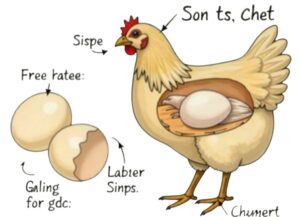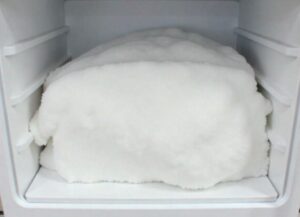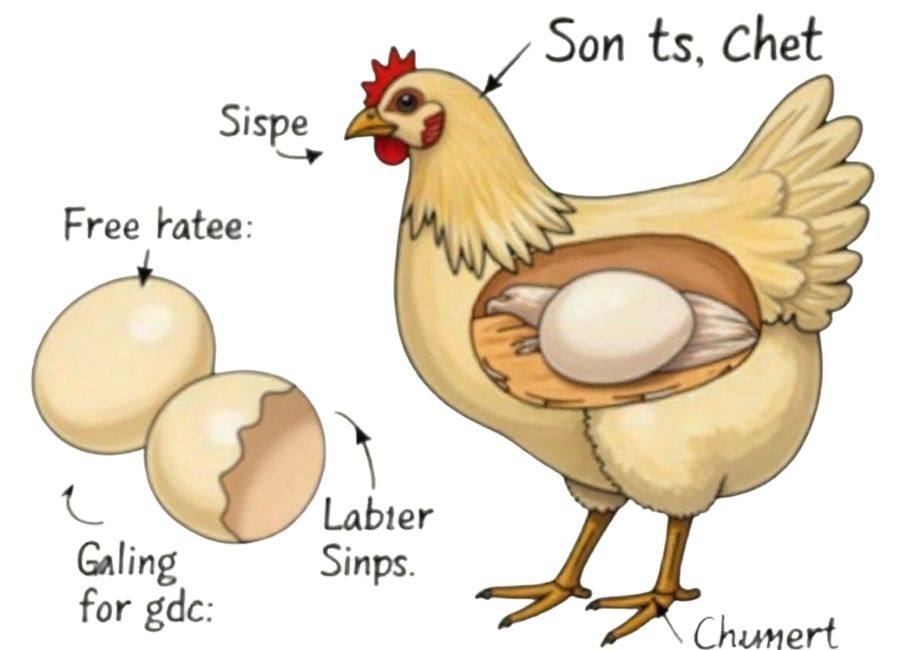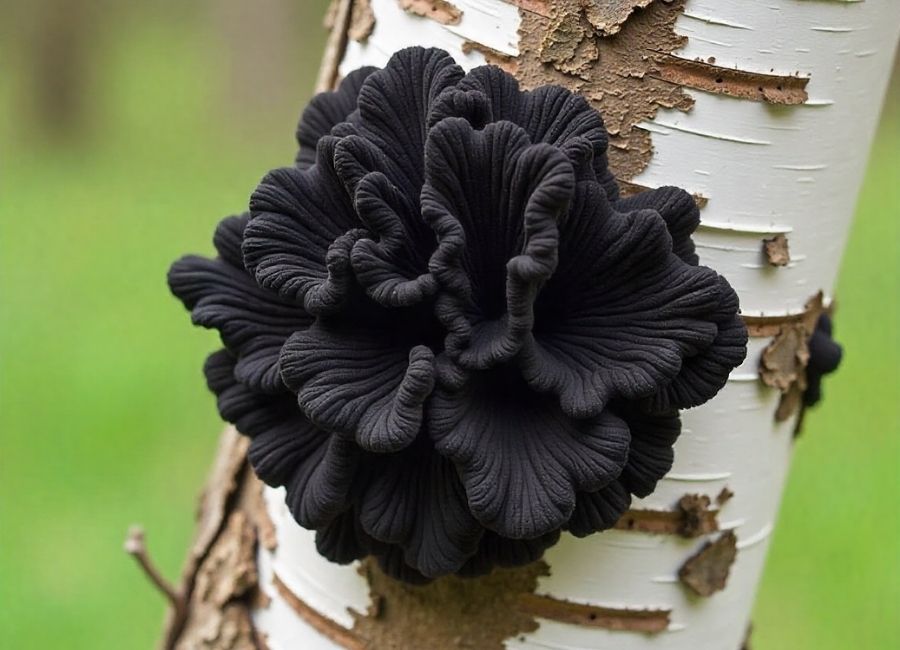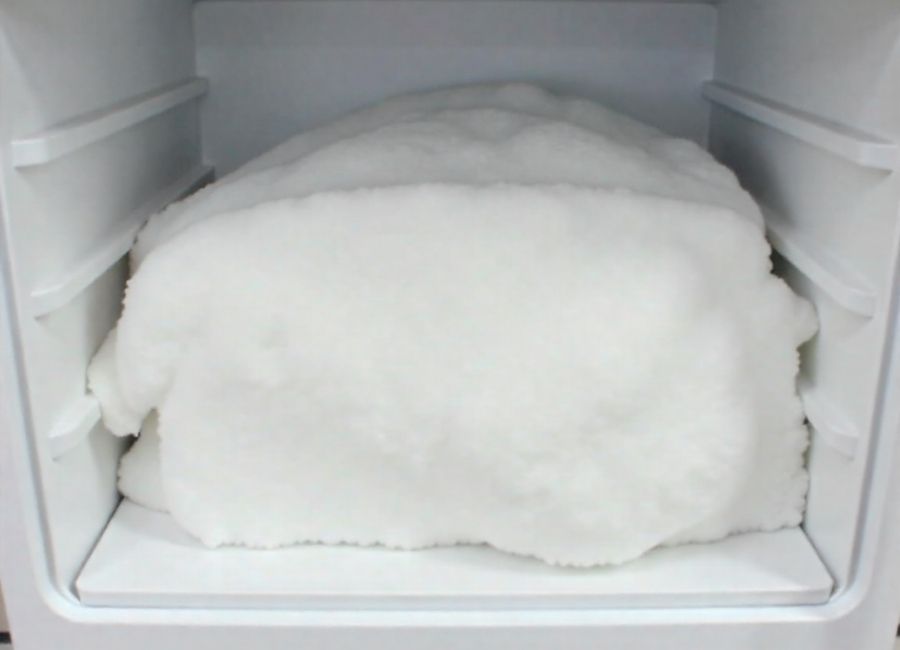Have you ever wondered how a chicken egg actually comes into the world? It’s a common question, and the answer is more interesting than you might expect. Learning about where chicken eggs come from and the unique anatomy involved can satisfy your curiosity and help you appreciate these amazing birds even more.
Whether you’re a backyard chicken keeper, a curious parent fielding questions from kids, or simply someone who enjoys learning about nature, this guide will walk you through everything you need to know about chicken egg production and delivery.
The Chicken’s Reproductive System: A Marvel of Nature
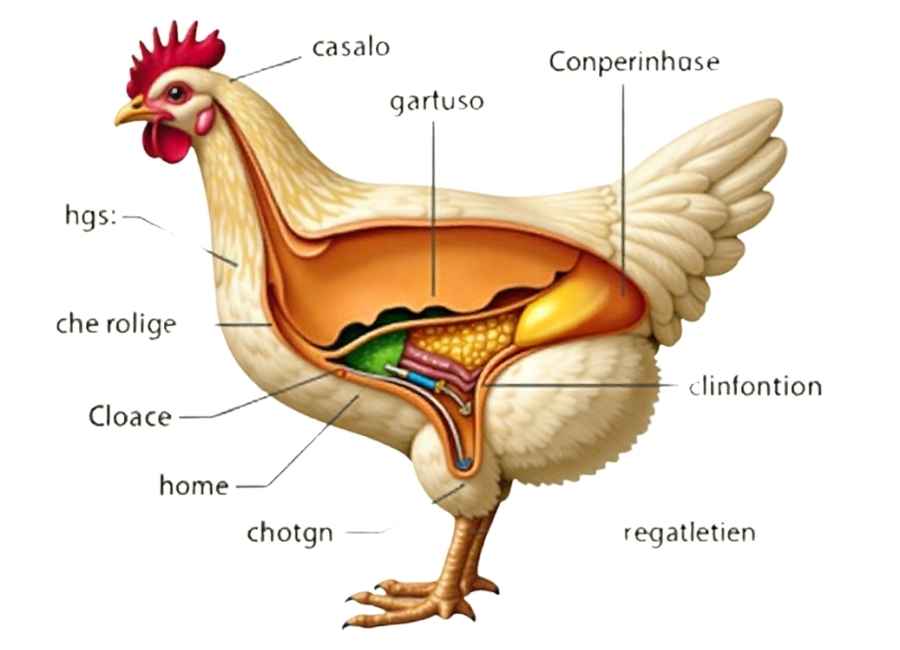
Chickens have a special reproductive system built for egg production. Unlike mammals, they have a single opening called the cloaca, pronounced “klo-AY-ka,” which serves several purposes.
The cloaca is where eggs exit the chicken’s body, but it’s also used for waste elimination and reproduction. This multi-purpose opening is located under (What Is a Chicken Vent?, n.d.) the chicken’s tail feathers, beneath the vent area that’s visible from the outside.
How the Cloaca Works
The cloaca operates through a sophisticated system of muscles and chambers. When a chicken is ready to lay an egg, specific muscles contract to open the passage while others close off the waste channels. This ensures that eggs emerge clean and uncontaminated.
This setup might seem unusual, but it works very well. The cloaca helps chickens manage different body functions and keeps things clean for healthy egg laying.
The Journey: From Ovary to Outside World
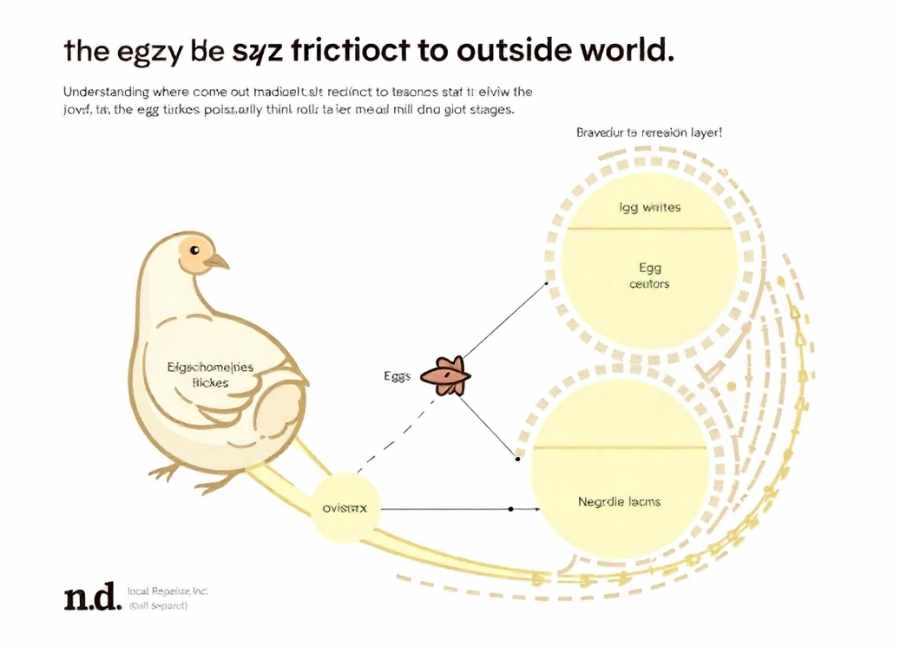
Understanding where eggs come out requires knowing how they get there in the first place. The egg’s journey through a hen’s body takes approximately 24-26 hours and involves several key stages. (How a Hen’s Egg is Formed: Understanding the Egg Development Process, n.d.)
Inside the Reproductive Tract
The process begins in the ovary, where the yolk forms. From there, the developing egg travels through the oviduct, a long, winding tube where the egg white, membranes, and shell are added layer by layer.
The oviduct consists of five distinct sections:
- Infundibulum: Where fertilization occurs (if a rooster is present)
- Magnum: Where the thick egg white forms
- Isthmus: Where the shell membranes develop
- Shell gland: Where the hard shell forms
- Vagina: The final section before the cloaca
The Final Exit
When the egg is finished, muscles push it through the vagina and out the cloaca. Most hens can lay an egg about every 24 hours while they are actively laying. (How Often Does a Chicken Make an Egg?, n.d.)
What Happens During Egg Laying
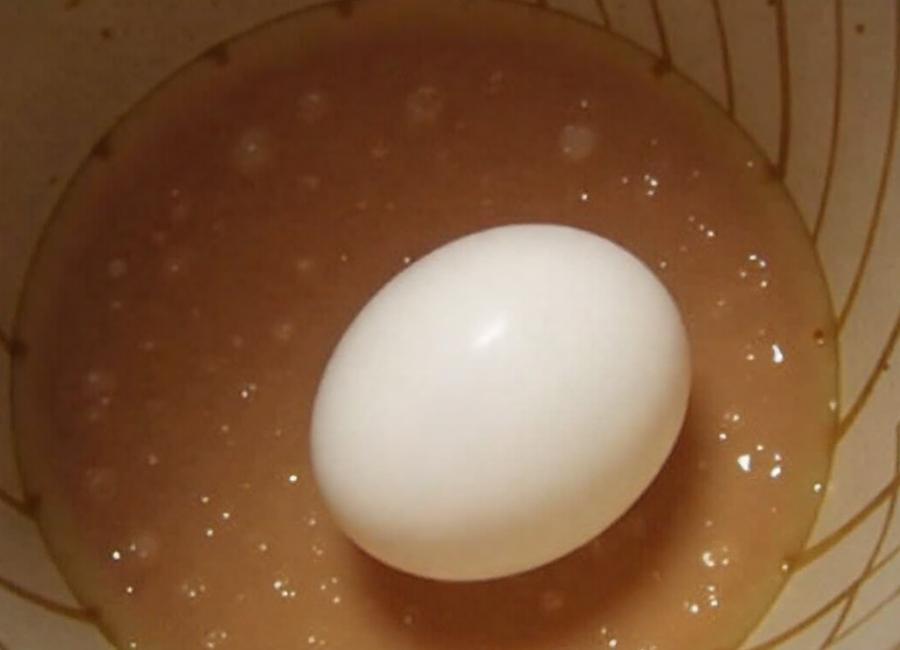
The actual moment of egg laying is called oviposition. This process involves several coordinated actions that ensure the egg emerges safely.
Physical Changes
Right before laying, you might see your hen acting differently. She could seem restless, make more noise, or look for a nesting spot. Her cloaca may also look larger and moist as her body gets ready to lay the egg.
The laying process itself typically takes 1-3 minutes, though it can occasionally take longer for first-time layers or particularly large eggs. (Chicken Egg Production: How Long do Chickens Lay Eggs?, n.d.) During this time, the hen will often make soft clucking sounds and may strain slightly.
After the Egg Emerges
After the egg is laid, the cloaca goes back to its usual size and shape. The muscles close the opening, and the vent area looks normal again. Many hens make proud noises after laying, known as the “egg song” by chicken keepers. (Why do hens squawk and cluck after laying eggs?, n.d.)
Common Misconceptions About Chicken Anatomy
Many people hold misconceptions about chicken reproduction that are worth clearing up.
Myth: Chickens Have Separate Holes for Eggs and Waste
This is false. The cloaca serves as the single exit point for both eggs and waste. However, the internal structure ensures these functions remain separate until the very end.
Myth: Eggs Are Dirty When They’re Laid
Fresh eggs usually come out very clean because of how the cloaca works. The body protects the egg from getting dirty as it is laid. Most dirt on store-bought eggs comes from the nest, not from the laying process.
Myth: All Birds Lay Eggs the Same Way
Most birds use a cloaca, but the details of how it works can be very different from one species to another. Chickens have developed their own system over thousands of years of living with people.
Factors That Affect Egg Laying
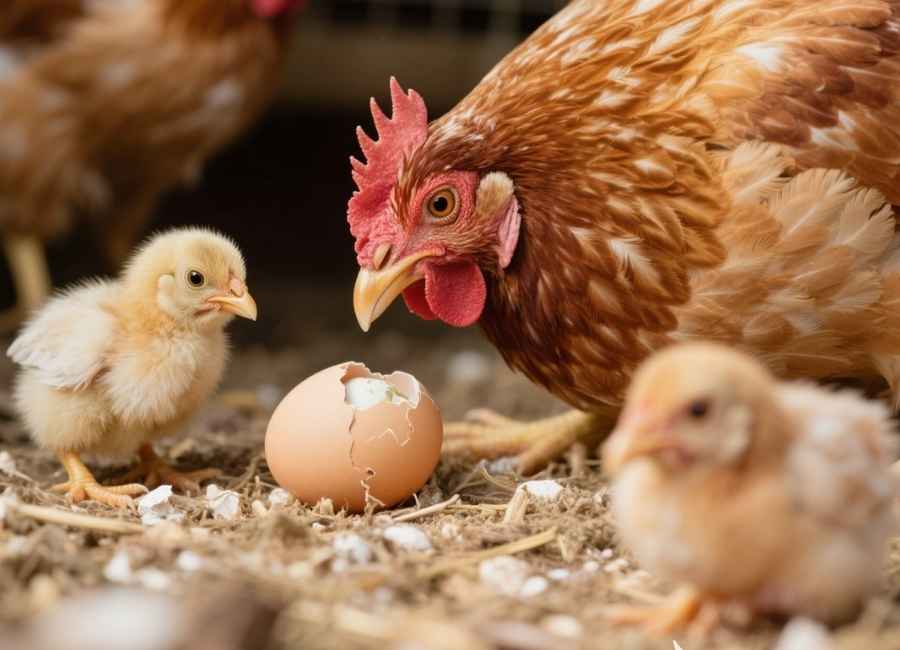
Several factors influence how smoothly the egg-laying process occurs and where complications might arise.
Age and Health
Young pullets just beginning to lay may experience some difficulty as their reproductive system matures. Similarly, older hens may have changes in their laying patterns and physical capabilities.
Nutrition and Environment
Good nutrition helps hens lay healthy eggs more easily. If a hen does not get enough calcium, her eggs might have soft shells, which can make laying harder.
Stress and Comfort
If hens are stressed, they might lay eggs less often or hold onto eggs longer than usual. Giving them clean, comfortable nesting boxes helps them lay eggs normally.
Signs of Laying Problems
While most hens lay eggs without difficulty, it’s important to recognize signs that might indicate problems.
Egg Binding
Egg binding happens when an egg gets stuck inside the hen. You might notice her straining, looking uncomfortable, or standing upright like a penguin. This problem needs quick help from a vet. (Egg Binding | Hen Health | British Hen Welfare Trust, n.d.)
Prolapsed Vent
Sometimes the cloaca stays out after a hen lays an egg. Small cases usually get better on their own, but serious ones need a vet’s help. (Prolapse | Hen Health | British Hen Welfare Trust, n.d.)
Unusual Egg Characteristics
If you see eggs with soft shells, blood spots, or odd shapes, it could mean there is a problem with the hen’s reproductive system that affects laying.
Supporting Your Hens’ Natural Process
If you keep chickens, understanding their anatomy helps you provide better care.
Proper Nesting Areas
Hens like to lay eggs in clean, cozy boxes that are easy to reach. They feel safest in dark, quiet spots.
Balanced Nutrition
Feeding your hens a balanced layer feed gives them what they need for healthy eggs and easy laying. Adding calcium helps make strong eggshells.
Regular Health Monitoring
Watching how your hens act and look can help you spot problems early. If you notice changes in how they lay eggs or in their health, take a closer look.
The Amazing Efficiency of Nature’s Design
The chicken’s reproductive system has developed over millions of years. The cloaca’s design helps chickens lay eggs efficiently and stay healthy and clean.
Thanks to this amazing system, chickens can lay eggs very quickly, which is why they have been so important to people for thousands of years. Today, some hens can lay more than 300 eggs each year, showing just how efficient their bodies are. (Facts & Stats, 2024)
Learning about this process helps us appreciate both the wonders of nature and the special birds that give us eggs.
Wrapping Up: Nature’s Remarkable System
The path a chicken egg takes from start to finish shows how efficient nature can be. The cloaca is the last step, letting eggs come out clean and whole through a system that is both simple and clever.
Next time you crack open a fresh egg, you’ll have a deeper understanding of tThe next time you crack an egg, you’ll know more about the amazing steps that made it possible. From the first stage in the ovary to the final exit through the cloaca, each part of the process has been shaped over thousands of years. I appreciate the daily miracle of egg production happening in your backyard.
